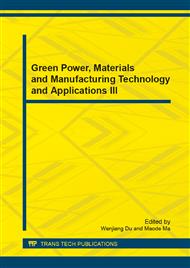p.418
p.423
p.427
p.431
p.438
p.443
p.448
p.453
p.457
AHP Based Technology Selection for Emerging Industry
Abstract:
Selecting the promising technologies to incorporate in new products is challenging for enterprises, especially for those who compete in emerging high-technology industries. By integrating external factor evaluation (EFE) and internal factor evaluation (IFE) matrix, this study proposes a new technology selection method. The proposed framework is applied to a real technology selection problem faced by a bio-technology enterprise in the context of Chinas economic, political and social environment. Two major aspects and 24 external/internal factors are determined. This study uses analytic hierarchy process (AHP) method to sort the information and derives weights of each criterion. Empirical results indicate that the candidate technology is promising, and shall be developed as one of the enterprises primary products.
Info:
Periodical:
Pages:
438-442
Citation:
Online since:
January 2014
Authors:
Price:
Сopyright:
© 2014 Trans Tech Publications Ltd. All Rights Reserved
Share:
Citation:


